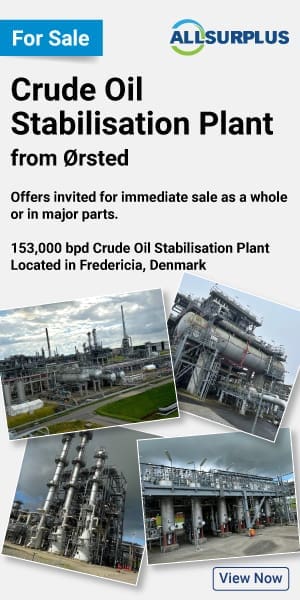As the world enters a new era in the energy industry, developing new large-scale facilities capable of producing vast amounts of energy has become paramount. The renewable energy sector has experienced a surge in recent years as the majority of the world aims to increase energy capacity that does not rely on the conventional energy sector, such as gas and oil. Hydrogen has risen from the deep waters of the renewable energy sector to strike fear into the hearts of “big oil.” Now OMV is developing one of Europe’s largest green hydrogen electrolysis facilities.
OMV is set to construct a truly astonishing hydrogen facility in Europe
OMV, Austria’s leading renewable energy company, has announced that it has laid the first foundation stone at the astonishingly large hydrogen facility in Bruck an der Leitha. The company has stated that the 140 MW plant will begin operations in 2027, marking a new era in Europe’s energy sector.
OMV will produce up to 23,000 tons of hydrogen annually at the new facility. This aligns with the company’s vision for the future, as it aims to reduce carbon emissions drastically over the coming years. Green hydrogen has become a major driver in the global emission reduction ambitions that have become as trendy as the latest iPhone, and OMV states that the new facility will enable domestic production of green hydrogen on an industrial scale.
“The construction of our state-of-the-art plant for green hydrogen is a clear signal for the energy transition. We are creating an integrated ecosystem based on the use of green hydrogen – supported by technological innovation, modern infrastructure, political support, and strong partnerships. Green hydrogen is a key component of our Strategy 2030 as a means of decarbonising our fuel production and a key to OMV’s responsible transformation.” – Alfred Stern, Chairman of the Executive Board and CEO of OMV
The new facility in Bruck an der Leitha brings with it a multi-million-dollar investment in hydrogen infrastructure
OMV has noted that part of the initial investment is the construction of a hydrogen pipeline around 22 kilometers, which, once completed, will connect the electrolysis plant in Bruck an der Leitha to the refinery in Schwechat. Importantly, OMV has noted that the operating and building permits for the project have been granted.
The project was positively assessed by the European Hydrogen Bank for funding, with the company stating that the funding agreement is currently being finalized alongside the Austrian promotional bank Austria Wirtschaftsservice GmbH. The funding contract is expected to be signed by the end of the year, with the plant scheduled to begin operations in 2027.
OMV will lean on its strategic partners to ensure the success of the project. OMV has noted that the integral partners and their respective responsibilities are Siemens, which will construct and operate the electrolyzer as well as the infrastructure needed for the project, while STRABAG will be responsible for the entire civil construction work. Europe has seen several hydrogen facilities being given the green light in recent months, pointing to a shift in the sector towards renewable energy production.
Hydrogen production has become the go-to energy resource across the sector
The renewable energy sector has grown well beyond anyone’s expectations in recent years. The OMV project is just the latest in a long line of projects that are slated for commissioning in the coming years as the international energy market finally embraces the sector after decades of stagnation. The EU has awarded funding for several hydrogen projects under its NetZero program. This comes following overwhelming calls by locals and the international community as a whole to increase investments in hydrogen power and the renewable energy sector as a whole.





